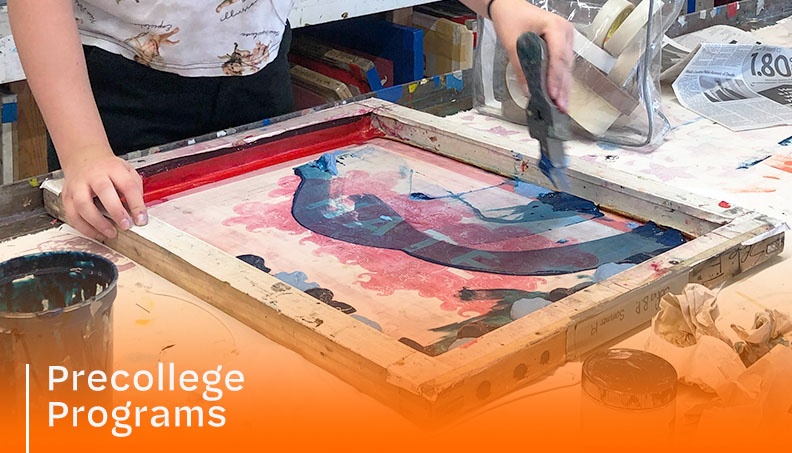ChatGPT said: Easy process to ordering with 10:9 Design Abilene
Wiki Article
The Vital Guide to Recognizing Screen Printing and Its Versatile Makes use of
Screen printing has an abundant background that goes back to old times, developing into an innovative method used throughout different markets today. This guide checks out the complexities of the screen printing procedure, detailing its applications in home, style, and advertising decoration - 10:9 Design near me. Recognizing these principles can open innovative capacity for both creative and industrial jobs. The complying with areas will certainly disclose necessary ideas and techniques to improve one's screen printing venturesThe History of Screen Printing
Screen printing has roots that map back centuries, its evolution shows the imaginative and technological developments of various societies. Coming from ancient China, the method was originally utilized for enhancing fabrics and later spread to Japan, where it became essential to Ukiyo-e woodblock printing. The approach moved to Europe in the 18th century, where it obtained appeal among craftsmens and commercial printers. The creation of image solution in the 20th century transformed screen printing, allowing for more elaborate layouts and greater efficiency. Musicians like Andy Warhol better pushed its appeal, utilizing the tool to develop legendary jobs that combined commercialism and fine art. By the late 20th century, screen printing had actually developed itself as a flexible strategy, used in vogue, marketing, and art. Today, it proceeds to advance, incorporating digital modern technology and expanding its applications throughout numerous industries.The Screen Printing Refine Explained
Screen printing transforms creative visions into tangible designs through a series of exact actions. An image is produced and after that moved onto a screen, typically made of fine mesh material extended over a frame. A light-sensitive solution is related to the screen, which is subjected to light, hardening in locations not covered by the photo. After rinsing the unhardened emulsion, a pattern is created.Next off, the screen is positioned over the substratum, whether it be textile, paper, or another product. Ink is then pushed through the open locations of the pattern utilizing a squeegee, depositing the design onto the substratum below. This procedure can be repeated for several shades, calling for different screens for each and every shade. The printed thing is healed utilizing warm to assure the ink adheres correctly, resulting in a durable, vivid design all set for usage.
Kinds Of Screen Printing Techniques

Additionally, specialty methods, such as discharge screen printing, eliminate color from the material to develop softer prints, while foil screen printing applies metal aluminum foil to achieve a shiny surface (10:9 Design Company). Each method offers unique attributes, accommodating numerous innovative requirements and manufacturing scales, eventually broadening the possibilities within the screen printing domain
Applications of Screen Printing in Various Industries

In addition, the signage and marketing fields utilize screen printing for producing captivating display screens and banners. This technique enables for strong colors and detailed layouts that capture interest. In electronic devices, screen printing is employed for applying conductive inks to motherboard, vital for component connections. Moreover, the home decoration sector welcomes screen printing to produce distinct styles on textiles and wall art. Overall, screen printing acts as a vital device across diverse fields, boosting products with customized and aesthetically appealing graphics.
Tips for Successful Screen Printing Projects
While carrying out a screen printing job, cautious focus to information can considerably boost the final result. First, selecting top notch products is important; this consists of the screen, inks, and substrates. Making use of suitable mesh counts can influence ink deposition and information resolution. Preparation is similarly crucial; detailed cleansing of screens and proper exposure times assure crisp prints.Next, accurate registration is vital for multi-color prints. Using positioning devices can assist achieve exact layering. Additionally, screening prints on scrap materials prior to manufacturing assists determine potential issues without squandering sources.

Frequently Asked Concerns
What Materials Are Ideal for Screen Printing on Material?
Cotton and polyester blends are ideal for screen printing on fabric as a result of their resilience and ink absorption. In addition, specialized textiles like silk or canvas can create one-of-a-kind textures and coatings, enhancing the general layout quality.Exactly how Do I Tidy and Maintain Screen Printing Tools?
To clean up and maintain screen printing equipment, one need to on a regular basis clean displays with appropriate solvents, evaluate mops for wear, lube relocating parts, and store all things in a dry, dust-free setting to lengthen their lifespan.What Are the Environmental Effects of Screen Printing?
Screen printing can have substantial ecological influences, including chemical waste from inks and solvents, water usage throughout cleansing procedures, and energy intake. Lasting practices and green materials are vital for minimizing these negative impacts.Can Screen Printing Be Done in your home Properly?
Screen printing can be properly done at home with the ideal products and strategies. Enthusiasts can develop quality prints, though success relies on their skill level, tools, and understanding of the process included.
What Are the Prices Linked With Beginning a Display Printing Company?

Starting a screen printing service entails expenses for tools, products, and workspace. First expenditures usually range from a few hundred to a number of thousand bucks, relying on the range, quality of equipment, and wanted manufacturing capacity.
Screen printing has an abundant history that dates back to old times, developing right into an innovative method used across various industries today. Another technique, rotary screen printing, utilizes cylindrical displays, promoting continuous printing on fabric rolls, therefore improving effectiveness for large-scale productions. Furthermore, specialty methods, such as discharge screen printing, remove dye from the material to produce softer prints, while aluminum foil screen printing uses metal aluminum foil to accomplish a glossy coating. In the fashion industry, screen printing is widely utilized to develop lively layouts on garments, allowing brand names to showcase their unique designs. Cotton and polyester blends are ideal for screen printing on material due to their resilience and ink absorption.
Report this wiki page